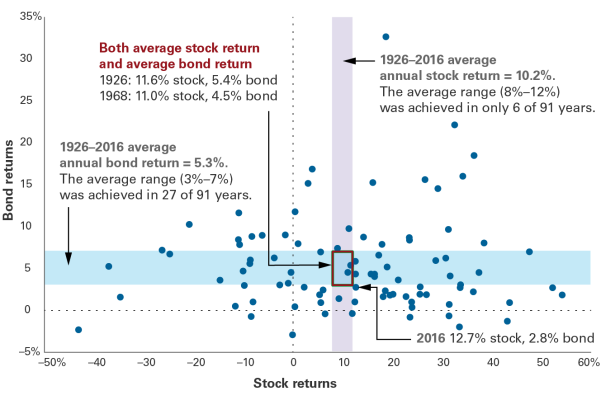USGrant1962
Thinks s/he gets paid by the post
From the Vanguard blog, a really interesting graph of bond against stock returns per year.
https://vanguardretailblog.files.wo...nnyhoff_required-v-desired-returns_final1.png
Lots of interesting observations here. For example, bonds have never lost more than about 4% in a year. There were a couple of years when bonds gained over 20%, and as the headline pointed out - average returns are unusual.
Here's the full blog post: https://vanguardblog.com/2017/11/16/whats-your-benchmark-for-investment-success/
https://vanguardretailblog.files.wo...nnyhoff_required-v-desired-returns_final1.png
Lots of interesting observations here. For example, bonds have never lost more than about 4% in a year. There were a couple of years when bonds gained over 20%, and as the headline pointed out - average returns are unusual.
Here's the full blog post: https://vanguardblog.com/2017/11/16/whats-your-benchmark-for-investment-success/

